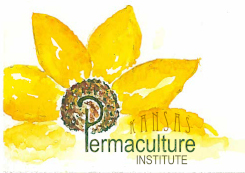Gardening with Oklahoma Native Plants: Steve Owens, Bustani Plant Farm
Soil preparation is not as important for native plants: they like the soil the way it is! Some even like to be stressed. Try growing them in cracks between landscape elements.
Wildflower meadow gardens are great for pollinator habitat, but study your site first. Consider microclimate and choose plants accordingly. Contrasting white flowers can help break up the uniformity of a meadow garden.
State grass: Indian grass. Flowers are showy enough to attract bees. Lead plant "tastes like an ice cream sundae to a cow." So if you see lead plant, you know a prairie hasn't been overgrazed!
"Minimalist garden" -- only three or fewer species.
Native narrow leaf sedges: why plant monkey grass when you can use natives? Use sensitive fern instead of pachysandra. Amsonia gives fluffy golden foliage and clumps of white flowers.
Common milkweed is frequently recommended for monarchs but can be very aggressive. Likes to spread out across a prairie! Other milkweeds might be more appropriate for a garden. Other insects besides monarchs use milkweed toxins to make themselves toxic.
Take advantage of rocks! Plant succulents and other heat-loving plants, or make a rock garden. Take care to choose plants that won't grow so big they hide your rocks.
Instead of Asian honeysuckle, plant native honeysuckles like Linissera sempervirens or flava. Native Clematis versicolor is a good decorative vine also, but doesn't look great after blooming. Native wysterias are not as fragrant as the imports but bloom later so don't freeze. Virginia creeper is very popular as a landscape vine in Europe but underappreciated in North America.
Choose native trees to attract native insects and birds.
Native Plants for Attracting Wildlife: Mark Howery, OK Dept of Wildlife Conservation
Talk will be a little bird biased!
Why attract wildlife? ecological roles, but also aesthetic enjoyment.
All wildlife require cover, water, and food. Plants provide two out of three. Cover means different things to different animals, so need a variety of both horizontal and vertical layering.
Native wildflowers produce nectar, seeds, and insects for birds. Some birds switch diets at different times of year; those that don't have to migrate.
Native trees with seeds for wildlife: sweet gum, red maple, sugar maple, boxelder, ash (female), and of course oak.
Sumac is a good food/habitat plant for a lot of birds, especially in winter. Also mistletoe and holly. Chinese holly berries are too large for native wildlife, so use American holly with smaller berries. Use 1 male for 5 or 6 female plants. Viburnums, buckthorns, currants, and hawthorns also produce lots of berries for birds.
Sumac suckers through underground stems; a clump is one clone, either male or female. Eastern Redcedar is a good source of winter cover and bird food, though maligned for invasiveness and offensive odor.
Hummingbirds arrive just as the native honeysuckles bloom. Nest way out on the end of a branch.
Gardening for the Survival of Pollinators: Marilyn Stewart, Wild Things Nursery
Typical suburban yards are sterile of plants for pollinators, and homeowners' associations promote that sterility.
If a tree falls, leave it lying. At least part of it. Leave tree snags standing, or at least brush piles. Use dead leaves as mulch, don't buy mulch.
Butterflies need puddles with salts; bees need shallow water and mud.
Insect hotels: pile up a lot of dead matter with hollow ends, in a structure to keep it dry.
Don't use pesticides ever. No insecticide, herbicide, or fungicide. Avoid neonicotinoids like the plague! Avoid fertilizers, esp. chemically derived.
Direct correlation between plant diversity and animal diversity. Only 30-50 species of native plants are available in the wholesale landscape trade, out of 172 native families and 1500 species.
Only 15% of crops are pollinated by honeybees. The rest are pollinated by neglected native pollinators, inc. bees, beetles, flies, moths.
Need blooms all season, which means lots of different bloom times, not one plant blooming all season. Need pollen and nectar, but also resin and oil.
Plant heirloom species, not hybrids. Pollinators are not adapted to hybrids. Very sensitive to flower shape and scent.
Planning a Successful Landscape Design: Ben Stallings, Interdependent Web
See http://interdepweb.com/content/microclimate_design_oklahoma_native_plan…
Example of a Wildlife Habitat - The Jenks Flycatcher Trail Outdoor Classroom & Demonstration Garden: Alyne Eiland, ONPS
Former vacant lot: now has swales, water feature, insect habitat, blind for observation
wildlife need food, water, cover, and a place to raise young. So do we! Nesting boxes for birds and bats; insect hotel.
Water features are very shallow for kid safety but also for wildlife access.
First non-residential monarch waystation in Jenks.
Used by students at all times of year for all different curricula.
- Inicie sesión para enviar comentarios





Comentarios